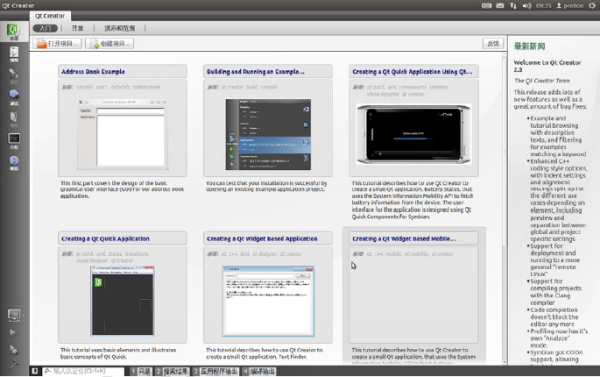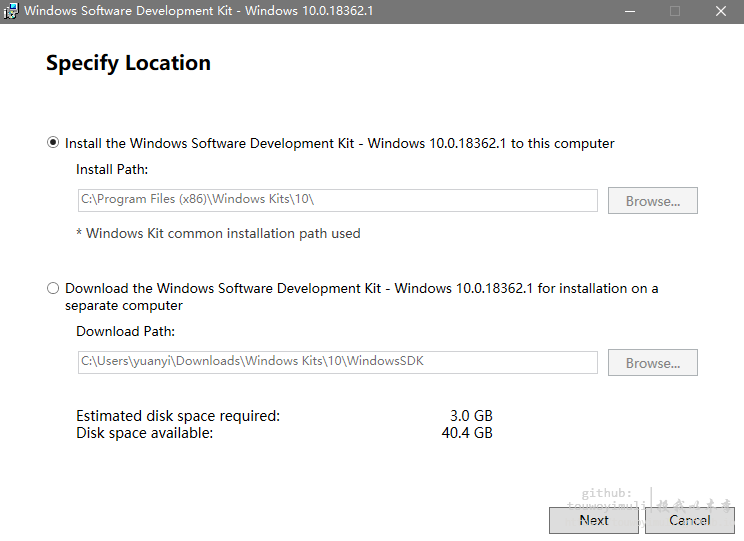

- QT CREATOR WINDOWS SDK HOW TO
- QT CREATOR WINDOWS SDK INSTALL
- QT CREATOR WINDOWS SDK GENERATOR
- QT CREATOR WINDOWS SDK UPDATE
- QT CREATOR WINDOWS SDK MANUAL
If you want to use a standalone target, you have to make sure your content is already cooked. Targets are the same as in Visual Studio, just remember to always switch both, the compile and the launch target. Done, happy coding If you want to build or run the project you can just use the preconfigured build / launch targets (you can switch the target in the bottom left corner).Run my tool and follow the instructions, the generated project file is stored in the directory \Intermediate\ProjectFiles.The following steps have to be performed every time you create a new project or if you upgrade your project to a new Unreal Engine version. This can be done globally by disabling the "ClangCodeModel" plugin in QtCreator under Help -> About Plugins -> C++. So if you have issues with completion I recommend turning off “Clang code model”. Clang code model offers many advantages over the legacy built-in code model (see link), but on most systems it doesn’t perform well enough to handle UE’s complex codebase.

UPDATE: If you are using QtCreator >= 4.7 or have manually enabled “Clang code model” you might experience very slow or unreliable autocompletion.UPDATE: If you use Visual Studio 2015 you should select Visual C++ 14.0 (amd64) under Compiler and Qt 5.x.x MSVC2015_64bit under Qt version Click “add” and adjust the new configuration to match this screenshot Next you have to configure a new build kit.Untick the corresponding checkbox (Otherwise it will get symbol data from the internet which can be very slow).įor the original debugger setup tutorial from Antares see (). IMPORTANT, when you debug a project for the first time, Qt Creator asks whether it should use Microsoft Symbol Server.Symsrv*symsrv.dll*C:\Users\\AppData\Local\Temp\symbolcacheĬache*cache*C:\Users\\AppData\Local\Temp\symbolcache In the “CDB Paths” tab insert the following paths (replace by your actual windows username):

In the “CDB” tab tick “ignore first chance access violations”. Open Qt Creator, go to “tools/options/Build & Run/Debugger”, click “add” and fill out the details according to this screenshot:
QT CREATOR WINDOWS SDK INSTALL
QT CREATOR WINDOWS SDK GENERATOR
QT CREATOR WINDOWS SDK UPDATE
.png)
In theory it should work with any version of Unreal Engine 4.
QT CREATOR WINDOWS SDK MANUAL
This tool allows you to take advantage of Qt Creator without having to bother with manual creation of projects files. Some advantages over vanilla Visual Studio: Qt Creator is a C++ IDE, which is written in native C++.
QT CREATOR WINDOWS SDK HOW TO
To address this issue, Antares created a nice tutorial ( Link | Wiki) on how to manually create a Qt Creator project for Unreal game logic development a few months ago. I also wrote a small tutorial (partially based on Antares’ tutorial) which covers initial setup of Qt Creator for Unreal development, usage of my tool and (optionally) doxygen help generation for the Unreal Engine classes.ĮDIT: Tool now open-source, available on GitHubĪs some of you may have noticed, Visual Studio 2013/2015 (in particular the default IntelliSense auto completion) performs pretty badly when it comes to C++ development with huge codebases (like the Unreal Engine), unless you use something like VisualAssistX (which is not free). In this post I want to share a small command line tool with you, which is able to automatically generate Qt Creator projects from Unreal Projects.


 0 kommentar(er)
0 kommentar(er)
